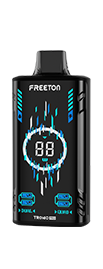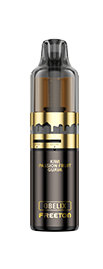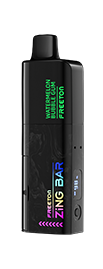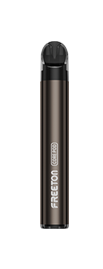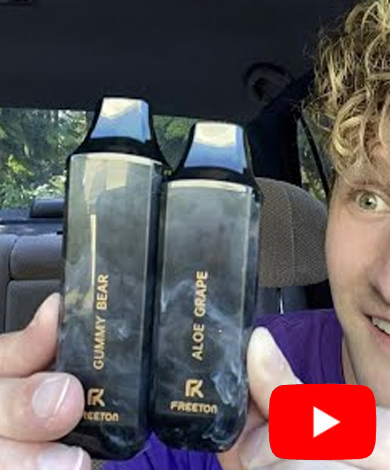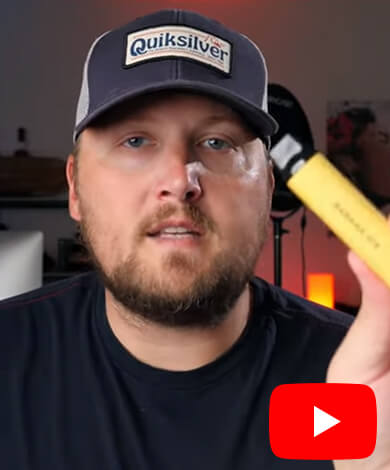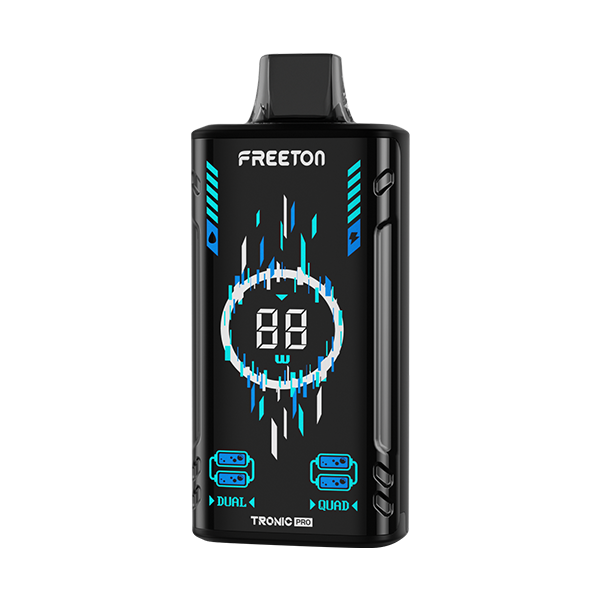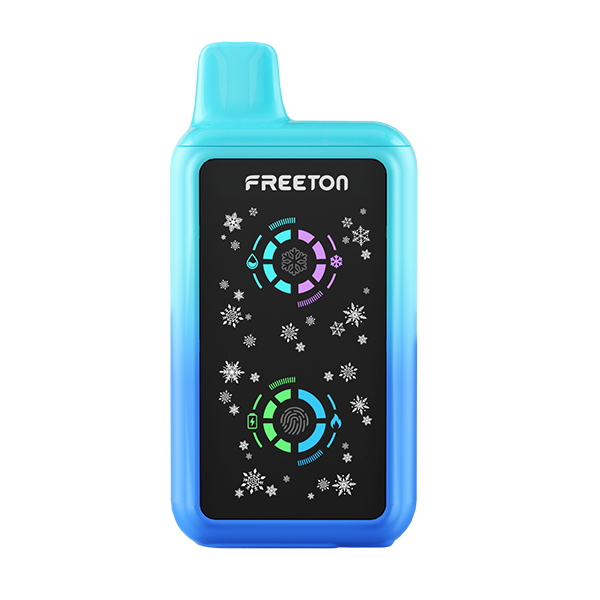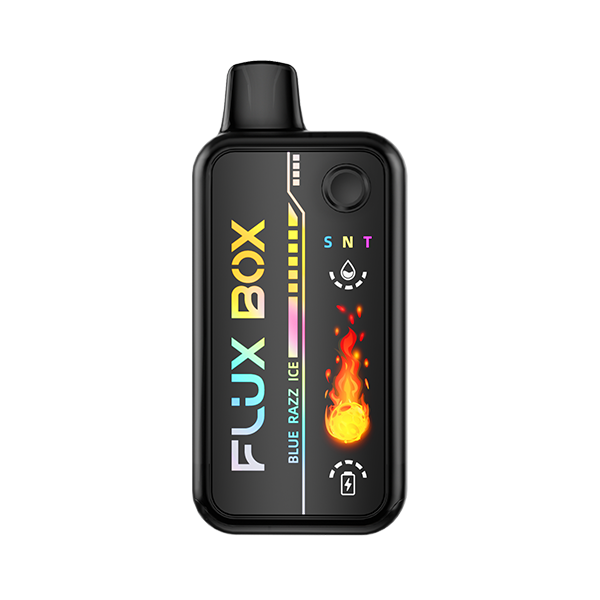
Introduction to Disposable Vapes In the fast-paced world we live in, disposable vapes have surged in popularity, offering a convenient and accessible entry into vaping for novices and experienced users alike. Their appeal lies not just in their ease of use but also in the vast array of flavors and strengths available, catering to a […]
Introduction to Disposable Vapes
In the fast-paced world we live in, disposable vapes have surged in popularity, offering a convenient and accessible entry into vaping for novices and experienced users alike. Their appeal lies not just in their ease of use but also in the vast array of flavors and strengths available, catering to a broad spectrum of preferences and tastes.
Disposable vapes, as the name suggests, are designed for single-use. Once the e-liquid is depleted, or the battery dies, the entire device is disposed of. This design offers unparalleled convenience, eliminating the need for refilling or recharging, thus making it an attractive choice for those seeking a straightforward vaping experience. The variety of options available ensures that there's a disposable vape out there for everyone, from those who prefer classic tobacco flavors to those who enjoy sweet, fruity, or exotic blends.
The growing popularity of disposable vapes is also reflective of a broader trend towards more mobile and hassle-free lifestyle gadgets. In Europe, where smoking rates vary significantly from country to country, disposable vapes have become a popular tool for smokers looking to quit or reduce their tobacco consumption. The convenience of not having to carry around bottles of e-liquid or chargers makes disposable vapes a favorite among those who are always on the move.
However, as these devices have become more widespread, questions about their environmental impact and the search for ways to extend their lifespan, such as learning how to make a disposable vape work after it dies, have become increasingly pertinent. This reflects a growing consciousness among users about the sustainability of their consumption habits and a desire to balance convenience with environmental responsibility.
In essence, disposable vapes embody the modern consumer's desire for products that are both convenient and capable of satisfying a wide range of preferences. As we delve deeper into the world of vaping, understanding the intricacies of these devices, from their components to their lifecycle, becomes essential for making informed choices about our vaping habits.

Understanding the Anatomy of a Disposable Vape
At the heart of the convenience offered by disposable vapes lies a simple yet efficient design, comprised mainly of three key components: the battery, the atomizer, and the e-liquid reservoir. Understanding how these parts work together is crucial for anyone interested in how to make a disposable vape work after it dies, as it sheds light on both the device's functionality and the potential reasons behind its eventual cessation of operation.
- Battery: The battery is the power source of the disposable vape, designed to last until the e-liquid runs out. Typically, these batteries are non-rechargeable, emphasizing the disposable nature of the device. The capacity of these batteries is calculated to match the amount of e-liquid, ensuring that the device only stops working when the liquid is depleted.
- Atomizer: This component is responsible for heating the e-liquid to produce vapor. The atomizer contains a coil that, when heated by the battery, vaporizes the liquid, allowing the user to inhale the flavored vapor. The efficiency of the atomizer is a key factor in the overall performance of the vape.
- E-Liquid Reservoir: The reservoir holds the e-liquid, which contains the flavorings and, in some cases, nicotine (though no nicotine options are increasingly popular). The size of the reservoir determines the lifespan of the disposable vape, with larger reservoirs offering more puffs.
These components work together seamlessly to provide the vaping experience. When the user inhales through the mouthpiece, the battery powers the atomizer to heat the e-liquid, creating vapor that is then inhaled. This process is efficient and user-friendly, requiring no prior knowledge or preparation by the user, contributing to the widespread appeal of disposable vapes.
Understanding this anatomy is not just about appreciating the technology behind disposable vapes; it's also about recognizing potential points of failure. For instance, if a disposable vape appears to die prematurely, the issue may lie in any one of these components. While the non-rechargeable nature of these devices means they are not designed to be opened or repaired, a basic understanding of their inner workings can help users identify when a device is truly at the end of its life and when there might be a simple issue, such as a loose connection or a temporary malfunction, that can be resolved.
In summary, the anatomy of a disposable vape is elegantly simple, designed for convenience and ease of use. However, this simplicity also means that when one component fails, the device is generally considered to be at the end of its life. This understanding is fundamental for those looking to maximize the use of their disposable vapes or troubleshoot any issues that arise.
The Lifespan of Disposable Vapes
The lifespan of disposable vapes is a crucial aspect for users, especially those interested in how to make a disposable vape work after it dies. This lifespan is influenced by several factors, including the capacity of the e-liquid reservoir, battery life, and the user’s vaping habits. Understanding these factors can help users anticipate the longevity of their device and recognize when it's nearing the end of its useful life.
- E-Liquid Capacity: The amount of e-liquid a disposable vape holds directly correlates with its lifespan. Typically, e-liquid capacity is measured in milliliters (ml), and the device is designed to deliver a specific number of puffs, often ranging from 200 to 600 or more. The actual number of puffs one can get from a device can vary based on the length and intensity of inhalation.
- Battery Life: The battery in a disposable vape is calibrated to last until the e-liquid is exhausted. However, battery lifespan can be affected by external factors such as storage conditions and usage patterns. Extremely cold or hot temperatures can impact battery efficiency, potentially reducing the device's overall life.
- Vaping Habits: How frequently and intensely a user vapes also plays a significant role in the device's lifespan. Deep, frequent inhales can deplete the e-liquid more quickly and may also strain the battery, leading to a shorter life expectancy for the device.
Signs a Disposable Vape is Nearing Its End:
- Reduced Vapor Production: As the e-liquid level drops, the device may produce less vapor, indicating that it's running low.
- Diminished Flavor: The intensity of the flavor diminishes along with the e-liquid, serving as a clue that the vape is nearing its end.
- Battery Indicator: Some disposable vapes come with an LED indicator that may start blinking or change color when the battery is low or the e-liquid is nearly depleted.
Understanding the interplay between these factors is essential not only for maximizing the enjoyment of your vaping experience but also for recognizing when it's time to responsibly dispose of your device. While disposable vapes are not designed to be recharged or refilled, knowing how to make a disposable vape work after it dies can sometimes extend its life in situations where the battery might have prematurely ceased functioning before the e-liquid is completely used up.
However, it's important to approach any attempts to extend the life of a disposable vape with caution, as tampering with the device can pose safety risks. The intended convenience of disposable vapes comes with the understanding that once they have served their purpose, they should be disposed of properly.
In conclusion, the lifespan of a disposable vape is a balance of design and usage. By being mindful of how these devices operate and the factors affecting their longevity, users can ensure they get the most out of their vaping experience while also adhering to safe and responsible usage practices.
How to Make a Disposable Vape Work After It Dies
Reviving a disposable vape that has seemingly run its course might sound like a daunting task, given their design for single use. However, understanding a few troubleshooting tips can occasionally breathe new life into a device that appears dead. It's important to note that these methods should be approached with caution and as a last resort, as disposable vapes are not designed to be tampered with. Here are some steps to consider if you're looking into how to make a disposable vape work after it dies:
- Preliminary Checks:
- Connection Issues: Sometimes, the issue might be as simple as a loose connection between the battery and the atomizer. Gently tapping the device against your hand can sometimes re-establish this connection.
- Battery Activation: Some vapes come with a manual activation feature, like a button or a specific sequence that needs to be performed. Ensure that the device hasn't been accidentally locked or requires reactivation.
- Safe Methods to Potentially Extend the Life:
- Warm Up the Device: If the vape is stored in a cold environment, the battery might temporarily lose efficiency. Warming the device in your hands for a few minutes can sometimes help.
- Clear Airflow Blockages: Check if there's any visible blockage in the mouthpiece that could be preventing airflow. A careful, gentle cleaning can sometimes resolve this issue.
- Charge the Battery (If Applicable): While traditional disposable vapes are not designed to be recharged, a very small number of models come with a rechargeable battery but are meant to be disposed of once the e-liquid runs out. If your device falls into this category and has stopped working due to a depleted battery, charging it might be an option. However, this is rare and should only be attempted if you're sure the device supports it and you use the appropriate charger.
- Last Resort - Opening the Device: Some users might attempt to open the device to directly check the connections or attempt to recharge the battery using specialized knowledge. This is not recommended due to safety risks, including the potential for battery leakage or explosion and the voiding of any warranty. If you choose to proceed, it's crucial to do so with extreme caution and at your own risk.
Expert Warning: Dr. Angela Patterson, a leading expert in electronic device safety, cautions against tampering with disposable vapes: "While the curiosity to extend the life of a disposable vape is understandable, it's important to remember these devices are designed with specific safety standards in mind. Tampering with them can not only compromise these safety measures but also pose serious risks to the user."
In summary, while there are methods to attempt reviving a dead disposable vape, they come with caveats and risks. The design of these devices prioritizes convenience and safety for a single usage cycle. If you find yourself frequently trying to revive disposable vapes, it may be worth considering a rechargeable option that better suits your needs and reduces waste.
Troubleshooting Common Issues
Troubleshooting common issues with disposable vapes can extend the enjoyment of your device and ensure you're getting the best possible experience. While disposable vapes are designed to be hassle-free, understanding how to identify and fix minor problems is beneficial. Here are some tips for dealing with common issues:
- Reduced Vapor Production: If you notice a decrease in vapor production, ensure that the device is not running low on e-liquid. If the device still has liquid but produces less vapor, try warming it in your hands to improve the e-liquid flow to the atomizer.
- Inconsistent Flavor or Burnt Taste: A burnt taste can occur if the wicking material becomes too dry or overheated. This usually means the e-liquid is nearly depleted. If it happens early in the device's life, it could be a manufacturing flaw. Unfortunately, there's little that can be done to fix this in a disposable vape.
- Device Not Producing Any Vapor: First, ensure that the battery isn’t simply locked or that a safety feature hasn’t been activated. If the device is air-activated, try drawing on it more forcefully or tapping it gently to activate the battery. If these steps don't work, the battery may be depleted, or the device could be defective.
- Leaking: Leakage can occur if the disposable vape is stored at extreme temperatures or if it's been physically damaged. Keep your vape at room temperature and handle it carefully to prevent leaks. If leaking persists, it's best to dispose of the device to avoid mess and potential skin irritation from e-liquid exposure.
When to Attempt a Fix:
- Attempt fixes only for minor issues like temporary battery inactivity or airflow blockages.
- If the device is leaking, producing a burnt taste, or showing signs of battery degradation, it's safer and more practical to dispose of it responsibly.
When to Responsibly Dispose of Your Device:
- When the e-liquid is depleted, and the flavor is consistently burnt or absent.
- If the device is damaged, excessively leaking, or showing signs of battery failure.
Expert Advice: According to Dr. Simon Howell, a specialist in consumer electronics, "While troubleshooting can sometimes extend the usable life of a disposable vape, safety should always be the priority. If a device is malfunctioning, it's often a sign that it's reached the end of its intended lifespan. Continuing to use a faulty device can pose risks."
In essence, troubleshooting common issues with disposable vapes requires a balance between practical fixes and recognizing when it's time to move on. By focusing on simple, safe solutions, users can enjoy their vaping experience while minimizing risk and waste.
Safety Considerations and Best Practices
When using disposable vapes, safety should always be a priority. These devices, while designed for convenience and ease of use, contain electronic components and batteries that must be handled with care. Adhering to safety considerations and best practices can prevent accidents and ensure a safe vaping experience.
- Proper Handling and Use:
- Avoid Excessive Heat and Cold: Store your disposable vape at room temperature. Extreme temperatures can affect battery performance and potentially cause the device to malfunction or leak.
- Do Not Attempt to Modify: Tampering with or trying to modify your disposable vape can lead to battery damage, leaks, or even cause it to burst. Use the device as intended by the manufacturer.
- Battery Safety:
- Be Aware of Battery Health: If your disposable vape starts to get unusually warm during use, stop using it immediately. This could be a sign of battery distress.
- Dispose of Responsibly: Once depleted, ensure that disposable vapes are disposed of at proper electronic waste recycling facilities to prevent battery-related environmental hazards.
- Environmental Considerations:
- Recycling: Look for local recycling programs that accept e-cigarettes. Proper disposal helps reduce electronic waste and the environmental footprint of disposable vapes.
- Mindful Usage: Consider the environmental impact of disposable vapes and explore more sustainable vaping options, such as rechargeable devices, when possible.
- Health Precautions:
- Nicotine Awareness: While this guide focuses on no nicotine disposable vapes, many disposables contain nicotine. Be mindful of nicotine addiction and related health risks if you use or switch between different types of vapes.
- Hygiene: Regularly clean the mouthpiece of your disposable vape to prevent bacteria buildup, especially if sharing with friends.
Expert Insight: Dr. Rebecca Green, an expert in electronic device safety, emphasizes the importance of responsible usage: "Disposable vapes, like any electronic device, pose safety risks if not used correctly. Users should prioritize proper handling, be cautious of the device's battery health, and always follow the manufacturer's guidelines for use and disposal."
In Conclusion: Safety considerations and best practices around disposable vapes are essential for ensuring a positive and safe vaping experience. By respecting these guidelines, users can enjoy the benefits of vaping while minimizing potential risks to themselves and the environment. As the vaping industry evolves, so too does the importance of promoting responsible use and disposal practices among the vaping community.
Alternatives to Reviving a Dead Disposable Vape
While understanding how to make a disposable vape work after it dies can be useful, it's also important to consider sustainable alternatives that can offer a more reliable and environmentally friendly vaping experience. Shifting focus from disposable to rechargeable vaping devices not only reduces waste but can also enhance your vaping experience with greater flavor variety, adjustable settings, and cost savings over time.
- Reusable Vape Pens: These devices are similar in design to disposable vapes but come with the added benefit of being rechargeable and refillable. This means you can choose your e-liquid flavors and strengths, offering a more personalized vaping experience while reducing waste.
- Pod Systems: Pod systems are compact, rechargeable devices that use pre-filled or refillable pods. They offer the convenience of disposables with the added advantages of rechargeability and, in the case of refillable pods, the ability to switch between e-liquids.
- Box Mods: For more experienced vapers seeking customization, box mods provide adjustable settings like temperature control and variable wattage. While larger than disposables or pod systems, they offer superior performance and flavor.
- Benefits of Switching:
- Cost-Effectiveness: Over time, investing in a rechargeable device and buying e-liquids or pods can be more cost-effective than purchasing disposables frequently.
- Environmental Impact: Rechargeable devices significantly reduce electronic waste compared to the single-use nature of disposables.
- Enhanced Experience: Rechargeable vapes often provide a better flavor experience and allow for more control over your vaping, such as adjusting the temperature or airflow.
Environmental and Health Considerations: Embracing alternatives to disposable vapes aligns with a growing awareness of the environmental impact of electronic waste and the health implications of vaping. By choosing rechargeable options, users can take a step towards more sustainable consumption habits while potentially reducing exposure to harmful substances associated with lower-quality disposables.
Expert Opinion: According to environmental scientist Dr. Emily Carter, "The shift towards rechargeable vaping devices is a positive trend not only for the environment but also for consumers. It encourages a more mindful approach to vaping, where users can enjoy a high-quality experience without contributing excessively to electronic waste."
In Summary: Exploring alternatives to disposable vapes is a worthwhile consideration for anyone looking to reduce their environmental footprint and enjoy a more customizable vaping experience. Rechargeable devices offer a blend of convenience, performance, and sustainability that disposables cannot match, making them an appealing choice for environmentally conscious vapers.

Conclusion: The Future of Vaping and Disposable Devices
The vaping landscape is continually evolving, with technological advancements and growing environmental consciousness shaping the future of how we vape. The convenience and accessibility of disposable vapes have undoubtedly played a significant role in the popularity of vaping. However, the conversation is increasingly turning towards sustainability and health, prompting both consumers and manufacturers to consider the impact of disposable devices on the environment and explore more sustainable alternatives.
Reflecting on Sustainable Vaping Practices: As we move forward, the shift towards rechargeable vaping devices represents a crucial step in reducing electronic waste and promoting more responsible consumption habits within the vaping community. This transition not only addresses environmental concerns but also offers vapers a more customizable and potentially safer vaping experience, away from the limitations and waste associated with disposables.
Encouraging Responsible Use and Disposal: The importance of responsible use and disposal of disposable vapes cannot be overstated. Consumers are encouraged to be mindful of their vaping habits, opting for devices that align with their values and the wider societal shift towards sustainability. Manufacturers, on their part, are called upon to innovate and provide eco-friendly vaping solutions that meet the demands of an increasingly informed and environmentally conscious market.
The Role of Regulation and Education: Regulatory bodies and public health organizations have a pivotal role in shaping the future of vaping. By implementing regulations that promote safety and environmental sustainability, and by educating the public about the benefits of choosing reusable over disposable devices, they can significantly influence the direction of the vaping industry.
Looking Ahead: The future of vaping is likely to see a greater emphasis on sustainability, health, and innovation. As consumers become more discerning and environmentally aware, the demand for high-quality, rechargeable vaping devices is expected to grow, potentially leading to a decline in the popularity of disposables. This shift presents an opportunity for the vaping industry to redefine itself, focusing on products that offer a safer, more enjoyable, and environmentally responsible vaping experience.
In Conclusion: Understanding how to make a disposable vape work after it dies is a reflection of the broader desire to maximize the value and lifespan of our possessions. However, the journey towards a more sustainable and health-conscious vaping future lies in embracing alternatives that reduce waste, enhance user experience, and prioritize safety. As we navigate these changes, the collective efforts of consumers, manufacturers, and regulators will be crucial in shaping a more responsible vaping culture for generations to come.
FAQs: Common Questions About How to Make a Disposable Vape Work After It Dies
Q: Is it safe to try and make a disposable vape work after it dies? A: While there are methods to potentially extend the life of a disposable vape, they come with risks. Disposable vapes are designed for single use, and tampering with them can pose safety hazards. It's generally safer to dispose of the device responsibly once it has stopped working.
Q: Can I recharge a disposable vape? A: Most disposable vapes are not designed to be recharged. Attempting to recharge a device not intended for this purpose can be dangerous. There are, however, a small number of disposable models with rechargeable batteries, but these are exceptions and clearly labeled as such.
Q: What should I do if my disposable vape stops working prematurely? A: First, perform basic checks for airflow blockages or battery activation issues. If the device still doesn't work and hasn't reached its expected puff count, it might be defective. In such cases, it's best to contact the retailer or manufacturer for a replacement, if possible.
Q: How can I dispose of a disposable vape responsibly? A: Dispose of your disposable vape at an electronic waste recycling facility or drop-off point. These facilities handle electronic devices properly, ensuring that hazardous materials are safely processed and recycled.
Q: Why does my disposable vape taste burnt? A: A burnt taste usually indicates that the e-liquid is depleted or the wicking material has been overheated. Once this burnt taste appears, it's a sign that the vape is nearing the end of its lifespan and should be disposed of.
Q: Are there any environmental concerns associated with disposable vapes? A: Yes, disposable vapes contribute to electronic waste, which is an environmental concern. Their single-use nature means more devices end up in landfills. Choosing rechargeable vaping devices can help mitigate this impact.
Q: What are the signs that a disposable vape is nearing the end of its life? A: Signs include a reduction in vapor production, a decrease in flavor intensity, or the device not producing any vapor at all. These indicators suggest that the e-liquid is nearly depleted or the battery has run out.


